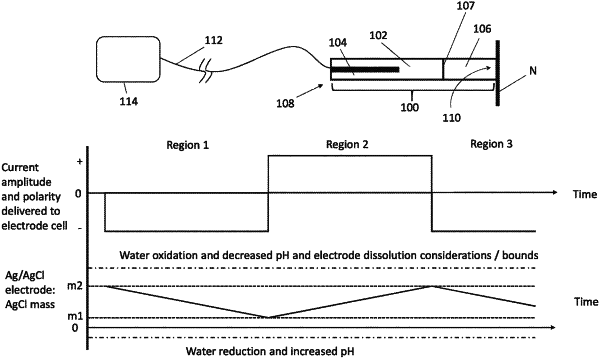| CPC A61N 1/0534 (2013.01) [A61N 1/0551 (2013.01); A61N 1/36062 (2017.08); A61N 1/36071 (2013.01); A61N 1/36157 (2013.01); A61N 1/40 (2013.01)] | 19 Claims |

|
1. A system for nerve block of a patient utilizing a capacitive rechargeable electrode, comprising:
a current generator;
at least one implantable electrode comprising titanium nitride, the at least one electrode configured to be in electrical communication with the current generator;
a sensor configured to determine a state of stored charge of the at least one implantable electrode; and
a controller configured to:
generate, by way of signaling to the current generator, a first current with a first polarity proximal to the at least one electrode sufficient to at least partially block conduction in a nerve, wherein an amount of stored charge in the at least one electrode decreases and generates current in an ionic component proximate the at least one electrode when the electrode is implanted within the patient;
generate, by way of signaling to the current generator, a second current with a second polarity proximal to the at least one electrode sufficient to increase the amount of stored charge in the at least one electrode;
receive data from the sensor;
determine if an amount of water is being electrolyzed; and
in response to determining that the amount of water is being electrolyzed, discontinuing at least one of the first current or the second current.
|